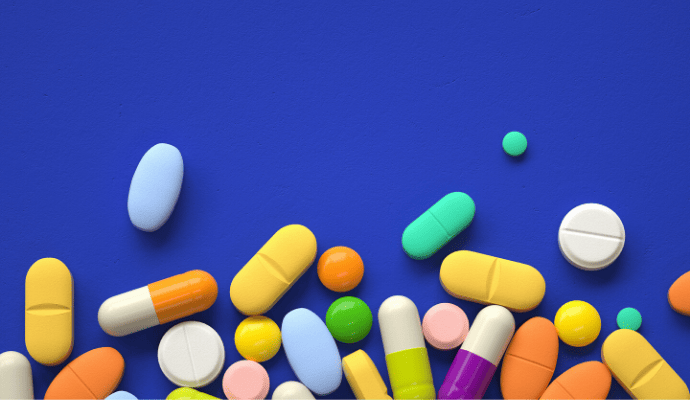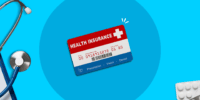What Is the Prescription Drug Coverage for Low-Income Individuals

Are you struggling to afford prescription medications? Don’t worry, help is available.
In this article, we will explore the various prescription drug coverage options for low-income individuals. From government assistance programs like Medicaid and Medicare Part D, to patient assistance programs and prescription savings cards, we will guide you through the resources and support available to ensure you can access the medications you need.
Let’s get started on your journey towards affordable prescription drug coverage.
Key Takeaways
- Government assistance programs such as Medicaid, Medicare Extra Help, Patient Assistance Programs, and State Pharmaceutical Assistance Programs provide coverage and assistance to low-income individuals in obtaining necessary prescription medications.
- Medicaid offers prescription drug coverage to eligible individuals, relieving the financial burden of medication expenses and ensuring access to healthcare for low-income individuals.
- Medicare Part D provides comprehensive prescription drug coverage for eligible low-income individuals, with government subsidies reducing the cost of prescription drugs for both brand-name and generic medications.
- State Pharmaceutical Assistance Programs, such as Texas Drug Card, Medi-Cal, EPIC, Prescription Assistance Program, and Illinois Cares Rx, offer additional assistance to low-income individuals with prescription drug costs, ensuring access to necessary medications for their health and well-being. Furthermore, patient assistance programs from drug manufacturers provide affordable medications to those who can’t afford them, with varying eligibility criteria and payment options.
Government Assistance Programs
You can access government assistance programs to help cover the cost of prescription drugs if you have a low income. These programs are designed to provide affordable healthcare options for individuals who may not be able to afford the high costs of medications.
One such program is Medicaid, which is a joint federal and state program that provides health coverage to low-income individuals and families. Medicaid covers prescription drugs, and eligibility requirements vary by state.
Another program is the Medicare Extra Help program, which assists low-income Medicare beneficiaries in paying for their prescription drugs.
Additionally, the Patient Assistance Programs (PAPs) offered by pharmaceutical companies help individuals who can’t afford their medications by providing them with free or discounted drugs.
These government assistance programs ensure that individuals with low incomes have access to necessary prescription medications without financial burdens.
Medicaid Coverage for Prescriptions
Covering prescriptions through Medicaid is an essential benefit for low-income individuals. Medicaid is a government program that provides health insurance to those who meet specific eligibility criteria. To qualify for Medicaid, you must meet certain income limits set by your state. These income limits vary from state to state, so it’s important to check the guidelines in your area.
Once you’re approved for Medicaid, you’ll have access to prescription drug coverage. This means that you can get the medications you need at a reduced cost or even for free. Medicaid coverage for prescriptions can greatly alleviate the financial burden of necessary medications, ensuring that low-income individuals have access to the healthcare they need to live healthy and fulfilling lives.
Medicare Part D Coverage
Medicare Part D provides comprehensive prescription drug coverage for eligible low-income individuals. If you’re struggling to afford your medications, this program can offer you the financial aid you need.
The government subsidies provided through Medicare Part D help reduce the cost of prescription drugs, making them more affordable for those with limited income. These subsidies, combined with the coverage provided by Medicare Part D plans, can significantly alleviate the burden of prescription drug expenses.
With this coverage, you can access a wide range of medications, including both brand-name and generic drugs, at affordable prices. So, if you’re in need of prescription drug coverage and financial assistance, Medicare Part D can be a valuable resource for you.
State Pharmaceutical Assistance Programs
State Pharmaceutical Assistance Programs can provide additional assistance to low-income individuals with their prescription drug costs. These state funded programs aim to alleviate the financial burden of medications for those who may not be able to afford them. By offering financial assistance, these programs ensure that individuals have access to the medications they need to maintain their health and well-being. Here is a table highlighting some of the state pharmaceutical assistance programs across the United States:
| State | Program Name | Eligibility Criteria |
|---|---|---|
| Texas | Texas Drug Card | Low-income residents |
| California | Medi-Cal | Low-income individuals and families |
| New York | Elderly Pharmaceutical Insurance Coverage (EPIC) | Seniors with limited income |
| Florida | Prescription Assistance Program | Low-income individuals without insurance |
| Illinois | Illinois Cares Rx | Seniors and disabled individuals with limited income |
These programs serve as a lifeline for low-income individuals, ensuring that they can afford the medications they need to maintain their health and quality of life.
Patient Assistance Programs From Drug Manufacturers
To continue exploring options for low-income individuals, let’s now delve into patient assistance programs offered by drug manufacturers. These programs are designed to provide affordable medications to those who can’t afford them otherwise. Here are some key points about patient assistance programs:
- Eligibility: Each program has its own eligibility criteria, which may include income level, insurance status, and specific medical conditions.
- Application Process: Patients must complete an application form, provide necessary documentation, and submit it to the drug manufacturer.
- Medication Access: If approved, patients can receive their medications either directly from the manufacturer or through their healthcare provider.
- Costs: Some programs offer free medications, while others require a small fee or co-payment based on income level.
- Renewal Process: Patients usually need to reapply annually to continue receiving assistance.
Prescription Savings Cards and Discount Programs
Prescription savings cards and discount programs offer accessible options for low-income individuals to save on their prescription medications.
These programs provide discounts and cost-saving opportunities that can significantly reduce the financial burden of purchasing necessary medications.
Accessible Prescription Discounts
You can save money on prescriptions through accessible discount programs and prescription savings cards. Here are some ways these programs can help improve prescription affordability and medication access for low-income individuals:
- Lower Cost: Prescription savings cards and discount programs offer reduced prices on medications, making them more affordable for those with limited financial resources.
- Wide Network: These programs often have partnerships with various pharmacies, ensuring a wide range of options for individuals to choose from.
- Easy to Use: Prescription savings cards and discount programs are typically straightforward to use, with simple enrollment processes and easy access to discounted medications.
- No Income Requirements: Unlike some assistance programs, prescription savings cards and discount programs don’t usually have income eligibility requirements, making them accessible to a broader population.
- Complementary to Insurance: These programs can be used alongside insurance coverage, helping to further reduce out-of-pocket costs for medications.
Cost-Saving Options Available
Take advantage of accessible discount programs and prescription savings cards to save money on prescriptions and improve affordability for low-income individuals.
One cost-saving option is to explore generic medication alternatives. Generic drugs are often just as effective as their brand-name counterparts but are sold at a lower cost. By opting for generic medications, you can significantly reduce your out-of-pocket expenses.
Another option is to engage in prescription drug price negotiations. Many pharmacies are willing to negotiate prices, especially for low-income individuals. It’s worth asking your pharmacist if there are any discounts available or if they can lower the price of your prescription.
Additionally, prescription savings cards are a valuable resource for obtaining discounts on medications. These cards can be found online or at your local pharmacy and can help reduce the cost of your prescriptions, making them more affordable for you.
Community Resources for Medication Assistance
When seeking assistance with medication costs, it’s important to explore community resources available to low-income individuals. Here are some options to consider:
- Charitable organizations: Many organizations offer medication assistance programs to help low-income individuals access the medications they need. These organizations may provide financial assistance or connect individuals with resources for discounted or free medications.
- Free clinics: Free clinics often provide medical care and medications to low-income individuals at no cost. These clinics may have partnerships with pharmaceutical companies or receive donations of medications to ensure that individuals can receive the medications they need without financial burden.
- Pharmacy assistance programs: Some pharmacies offer assistance programs that provide discounts or reduced prices on medications for low-income individuals. These programs can help make medications more affordable and accessible.
- Prescription assistance programs: Many medication manufacturers offer programs that provide free or low-cost medications to individuals who qualify based on income. These programs can be a valuable resource for those struggling to afford their medications.
- State and local assistance programs: Some states and local governments have programs in place to assist low-income individuals with medication costs. These programs may offer financial assistance or connect individuals with resources for discounted medications.
Frequently Asked Questions
Are There Any Restrictions or Limitations on the Types of Prescription Drugs That Low-Income Individuals Can Receive Through Government Assistance Programs?
You’ll want to know if there are any restrictions or limitations on the types of prescription drugs you can receive through government assistance. The government may have guidelines in place to ensure affordability and access to essential medications.
How Do Low-Income Individuals Apply for Medicaid Coverage for Prescriptions, and What Documentation Is Required?
To apply for Medicaid coverage for prescriptions, you’ll need to follow the application process and provide the required documentation. Make sure you have all the necessary paperwork ready to expedite your application.
Can Low-Income Individuals With Medicare Part D Coverage Also Qualify for Additional Prescription Drug Coverage Through Medicaid?
You can qualify for additional prescription drug coverage through Medicaid even if you have Medicare Part D coverage. Medicaid eligibility for prescription drugs can provide assistance for low-income individuals with their medication costs.
What Are the Eligibility Criteria for State Pharmaceutical Assistance Programs, and How Can Low-Income Individuals Apply for Them?
To find assistance for prescription drugs, you can check State pharmaceutical assistance programs. The application process involves meeting eligibility criteria such as income limitations and providing necessary documentation. Medicaid and Medicare Part D coverage may also offer additional prescription drug coverage. Patient assistance programs and drug manufacturer programs may also grant access.
Are There Any Income Limitations or Other Requirements to Qualify for Patient Assistance Programs From Drug Manufacturers, and How Can Low-Income Individuals Access These Programs?
You might be wondering about income limitations and how to access patient assistance programs from drug manufacturers. These programs can provide valuable support to low-income individuals in need of prescription drug coverage.








